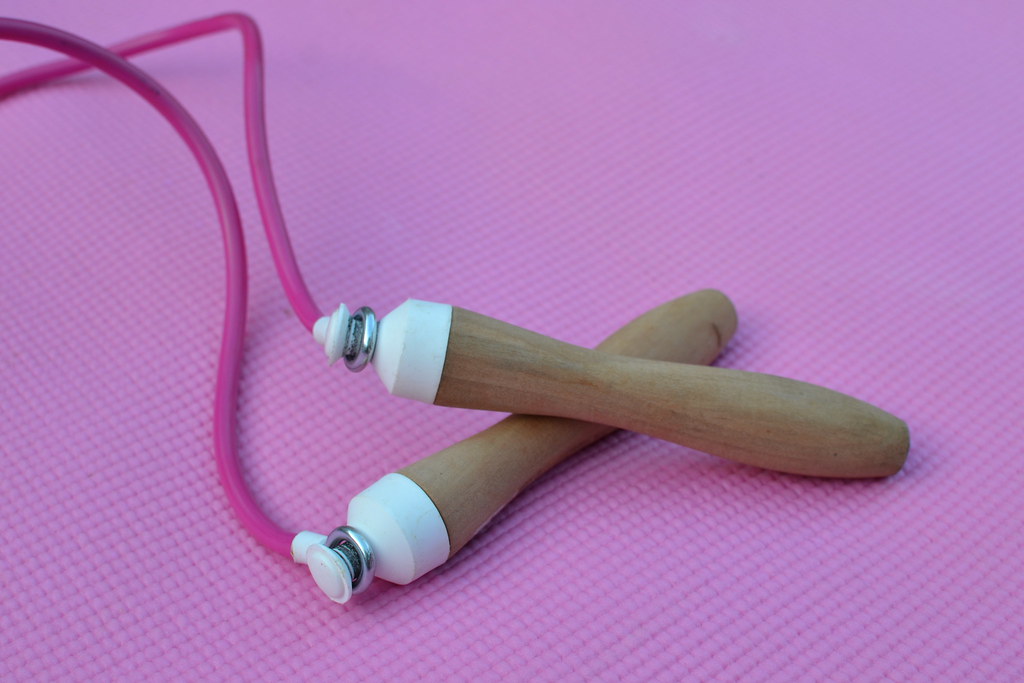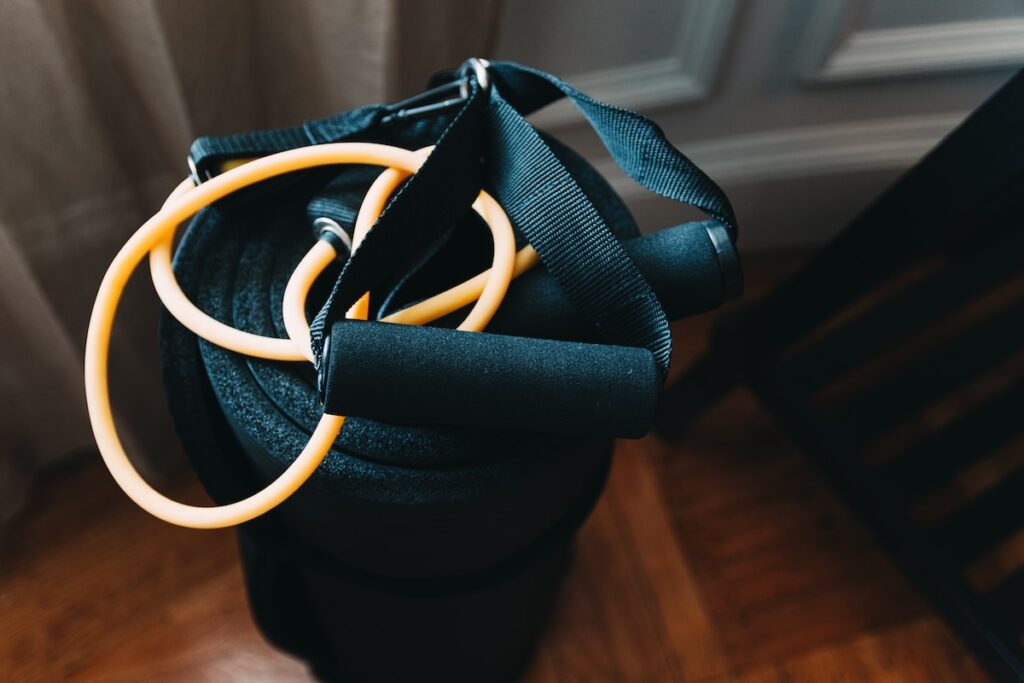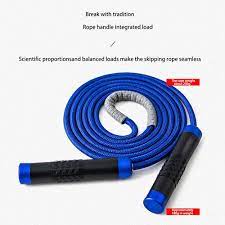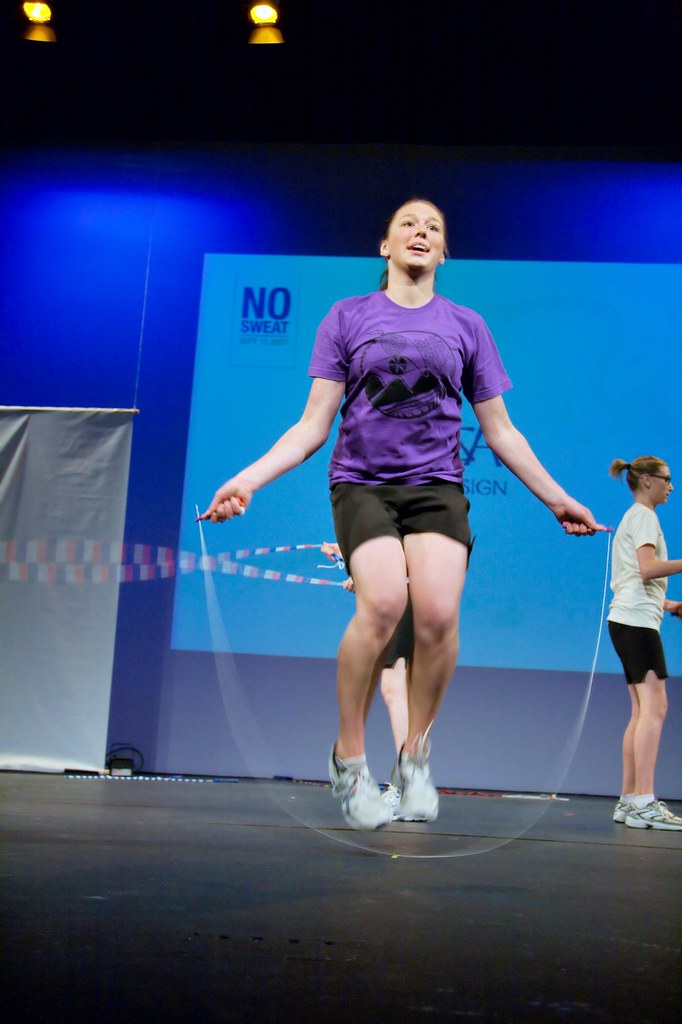Looking to add a burst of fun and effectiveness to your workout routine? Look no further than the humble skipping rope. Are you ready to elevate your fitness game with this simple yet incredibly effective tool? Whether you’re a beginner or a seasoned athlete, the benefits of skipping rope are unparalleled. From torching calories and improving cardiovascular health to enhancing coordination and agility, it’s an all-in-one powerhouse.
But that’s not all – we’ll delve into the various techniques, tips for beginners, advanced workouts, and how to choose the perfect rope for your needs. Get ready to discover why this timeless activity is making a major comeback in the fitness world. Let’s jump into the invigorating world of skipping rope!
The Enduring Appeal of Skipping Rope

Historical Snapshot
Skipping rope, also known as jump rope, has a rich historical legacy dating back to ancient civilizations. It has been utilized for both fitness and play throughout history. From the early Egyptians to medieval Europeans, skipping rope has been a popular activity in various cultures worldwide.
In ancient Egypt, depictions of children jumping over vines demonstrate the early use of ropes for recreational purposes. In medieval Europe, soldiers used jump ropes as part of their training regimen to improve agility and endurance. This historical context highlights the enduring appeal and versatility of skipping rope across different time periods and societies.
The simplicity and effectiveness of this exercise tool have made it a staple in fitness routines globally. Its adaptability from being an essential element in military training to a fun playground activity showcases its universal appeal.
Skipping Rope Evolution

Originally crafted from natural materials like hemp or leather, traditional jump ropes have evolved significantly over time. Modern iterations feature adjustable lengths to accommodate users of different heights and ergonomic handles for improved grip comfort.
The evolution of skipping ropes is driven by the pursuit of enhanced performance and convenience. For instance, speed ropes are designed with lightweight materials such as PVC or nylon for rapid rotations during intense workouts or competitions. These advancements cater to diverse user needs, whether it’s athletes aiming for speed or fitness enthusiasts seeking durability and comfort.
This evolution reflects the ongoing efforts to optimize functionality while maintaining the fundamental benefits that make skipping rope such an enduring fitness tool.
Skipping Rope for Health and Fitness

Skipping rope is an excellent way to improve heart health and circulation. The repetitive jumping motion increases the heart rate, strengthening the heart muscle and enhancing overall cardiovascular endurance. This activity also boosts lung capacity and improves oxygen utilization, contributing to better respiratory function.
Regular skipping rope sessions can lead to burning a significant amount of calories in a short period. It’s an effective tool for weight management and fat loss, making it suitable for individuals aiming to shed excess pounds or maintain a healthy weight. Furthermore, skipping rope supports high-intensity interval training (HIIT), which is known for its effectiveness in burning calories and improving cardiovascular fitness.
The act of jumping over a skipping rope engages various muscles, particularly the calves. This repetitive movement strengthens the muscles in the legs while also promoting stability and control through engagement of core muscles. As such, using a jump rope regularly helps develop overall muscular endurance throughout the body.
Mastering the Technique
Jumping Fundamentals

Focusing on proper foot positioning and posture is essential. Keep your feet close together and land softly on the balls of your feet with knees slightly bent. This helps reduce impact on your joints while maintaining balance and control.
Mastering rhythm and timing is crucial for a smooth skipping experience. Try to maintain a consistent pace, jumping just high enough to clear the rope without unnecessary effort. This not only improves endurance but also enhances coordination.
Start with basic jumps before advancing to more complex techniques. Begin by practicing single jumps, gradually increasing speed as you become more comfortable. Once you’ve mastered this foundation, you can progress to alternate foot jumps or high knee raises for added challenge.
- Proper foot positioning
- Soft landing on the balls of feet
- Consistent pace and rhythm
- Basic jumps before advancing
Advanced Moves
Once you’ve honed your basic skills, it’s time to incorporate some advanced moves into your routine. Double unders are an excellent way to intensify your workout; they involve spinning the rope twice under your feet in one jump instead of once.
Integrating crossovers adds variety and challenges both coordination and agility. As you gain confidence with crossovers, try incorporating side swings into your routine for an extra element of complexity.
To take it up a notch further, experiment with complex combinations such as double unders followed by crossovers or alternating between different types of jumps like running in place or scissor kicks while jumping rope.
The Right Equipment
Rope Varieties
There are different varieties available, each offering unique benefits. You can choose between speed, beaded, or weighted ropes. Speed ropes are ideal for quick and intense workouts, while beaded ropes provide more weight and control. Weighted ropes offer additional resistance for a more challenging workout. Consider the material options which include nylon, PVC, or leather. Nylon ropes are durable and lightweight, PVC ropes are affordable and suitable for beginners, while leather ropes offer durability and smooth rotation.
Each type of skipping rope serves a specific purpose; therefore understanding your fitness goals is crucial in making the right choice. For instance, if you aim to improve speed and agility, a speed rope would be most effective. On the other hand, if you want to focus on upper body strength as well as cardio endurance simultaneously, a weighted rope could be the best option.
Choosing Your Rope
When selecting a skipping rope, it’s essential to consider your fitness goals and skill level. If you’re new to jumping rope or looking to improve your skills gradually over time without buying multiple products along the way – an adjustable length feature is beneficial as it allows for personalized fit based on individual height preferences.
Furthermore, testing out different styles of skipping ropes can help determine which one feels most comfortable during use. For example, if you’re aiming for high-intensity interval training (HIIT), opting for a lightweight speed rope may enhance your performance due to its ability to rotate quickly with minimal effort. On the contrary, if muscle toning is your primary goal when incorporating jump roping into your routine – choosing a heavier weighted or beaded option may provide added resistance leading to better results in terms of muscle engagement.
Training Solo with a Skipping Rope
Routine Structure
When training solo with a skipping rope, it’s essential to follow a well-structured routine. Begin by warming up with dynamic stretches, such as arm circles and leg swings, to prepare your body for the workout. After the warm-up, alternate between high-intensity intervals of skipping at maximum effort and active rest periods to allow for recovery. This combination helps in building endurance and burning calories effectively.
To keep your workouts engaging and effective, incorporate diverse jump styles into your routine. Mix things up by including basic jumps, single-leg hops, double unders, or criss-cross jumps. By doing so, you engage different muscle groups while challenging yourself mentally and physically.
Progress Tracking
Tracking progress is crucial when training with a skipping rope. You can monitor improvement by keeping count of the number of jumps or tracking the duration of each session. Over time, you should see an increase in both these metrics as your stamina and skill improve.
Keeping a record of challenging sequences mastered serves as motivation and evidence of progress made over time. For instance, note down when you successfully complete longer sets of double unders or conquer complex footwork patterns.
Another way to track progress is by using wearable fitness tech that measures performance metrics during skipping sessions. Many fitness trackers offer features specifically designed for jump rope workouts that can provide valuable data on heart rate, calories burned, and even jump count accuracy.
Competitive Skipping Rope Scene
International Championships
International championships in competitive skipping rope are hosted by organizations like the World Jump Rope Federation (WJRF). These events showcase diverse competitive categories and age groups, drawing participants from around the globe. Athletes from different countries come together to compete and display their skills in various skipping rope disciplines.
Competitive skipping rope championships are a global affair, attracting athletes of all ages and skill levels. The World Jump Rope Championship is one such event that brings together individuals with a passion for skipping rope from across the world. This creates an environment where athletes can learn from each other’s techniques and styles, fostering a sense of camaraderie within the community.
The international championships provide a platform for participants to demonstrate their prowess in skipping rope, promoting sportsmanship and healthy competition among individuals worldwide. These events not only celebrate athleticism but also serve as an opportunity for cultural exchange, with participants bringing their unique backgrounds and experiences to the forefront.
Competition Categories
Competitive skipping rope encompasses several categories to accommodate different styles and skill sets. Common competition categories include single rope freestyle, speed events, and team routines. Single rope freestyle involves athletes performing choreographed routines set to music, showcasing creativity alongside technical proficiency.
Speed events test participants’ agility and quickness as they strive to complete as many jumps as possible within a specified time frame. Team routines involve synchronized performances by multiple skippers working together seamlessly to execute complex maneuvers with precision.
To ensure fair competition, these categories are further divided into age brackets, allowing individuals of similar age groups to compete against one another on an equal footing. This promotes inclusivity within the sport while encouraging young talents to hone their skills through healthy rivalry.
Judged performances play a pivotal role in competitive skipping rope competitions; they are evaluated based on both creativity and technical skill. Judges assess factors such as form, execution of tricks or maneuvers, originality of routine composition, musicality (for freestyle), speed (for speed events), synchronization (for team routines), among others.
Jumping Techniques Explored
Basic Jumps
Mastering skipping rope begins with the basic jumps. The standard two-foot hop and alternate foot jumps are fundamental techniques that lay the groundwork for more advanced moves. For instance, incorporating variations like the boxer step and heel-toe adds diversity to your routine, helping you build a strong foundation for mastering more complex techniques. These basic jumps not only improve your coordination but also boost your cardiovascular fitness.
These simple maneuvers can be easily customized to suit different skill levels and styles. For example, beginners might start with a slow-paced two-foot hop before gradually increasing their speed and adding in some fancy footwork. On the other hand, experienced jumpers may seamlessly transition between various basic jumps to create an engaging and challenging routine.
Complex Sequences
Once you’ve mastered the basics, it’s time to explore more complex sequences using your jump rope. Incorporating maneuvers such as criss-crosses, double unders, and side swings into your routines adds an element of complexity that keeps things interesting. Mastering multiple crossover patterns not only challenges your agility but also enhances your overall athleticism.
For competitive jump ropers or those looking for a fun way to level up their workouts, mastering these complex sequences is essential. It allows them to create dynamic routines that showcase their skills while providing an intense full-body workout experience.
Moreover, these intricate combinations offer endless possibilities for creativity and innovation in skipping rope routines. By experimenting with different patterns and transitions between moves, jumpers can develop unique sequences that captivate audiences or provide a fulfilling personal challenge.
Health Effects and Safety Measures

Positive Impacts
Skipping rope, also known as jump rope, offers a range of positive impacts on both physical and mental well-being. It’s not just about getting your heart rate up; it can also help with mental focus, coordination, and agility. When practiced in group settings or classes, skipping rope becomes a social activity that fosters camaraderie and teamwork. The rhythmic movement involved in jumping rope has been found to support stress reduction, helping individuals find calmness through the repetitive motion.
Jumping rope is more than just an exercise; it’s a multifaceted activity that engages various aspects of our health. For instance, when you’re focusing on keeping pace with the rhythm of the skipping rope, you’re actually promoting mental focus without even realizing it. This aspect alone makes it an excellent workout for enhancing concentration skills.
Moreover, coordinating your jumps with the rotating motion of the rope enhances overall body coordination and agility. With consistent practice over time, individuals can notice improvements in their reflexes and overall physical dexterity.
Furthermore, engaging in this activity within group settings or classes promotes social interaction among participants. Whether it’s cheering each other on during challenging routines or sharing tips for improvement, jumping rope brings people together while they work towards their fitness goals.
Lastly but importantly, the rhythmic nature of jumping creates a meditative state for many practitioners. This helps them unwind from daily stresses and allows them to regain composure through focused movements.
Injury Prevention
While jumping rope offers numerous benefits, it’s crucial to be mindful of injury prevention techniques. Proper landing technique plays a significant role in reducing impact on joints during jump roping sessions. Focusing on landing softly rather than heavily can help minimize strain on knees and ankles, preventing potential injuries associated with repetitive impact.
In addition to proper landing technique, it’s essential to avoid excessive jumping on hard surfaces like concrete or asphalt. These unforgiving surfaces can lead to strain injuries due to prolonged impact from continuous jumping. Opting for softer surfaces such as gym mats or rubberized flooring can significantly reduce the risk of strain-related injuries.
Regular stretching before and after jump roping sessions is vital for maintaining flexibility throughout your muscles and preventing muscle tightness post-workout. Stretching helps prepare your body for physical exertion by increasing blood flow, which reduces the risk of muscle strains during exercise.
Incorporating Skipping Rope into Your Routine
Workout Integration

Incorporating a skipping rope into your workout routine can add an element of fun and versatility. You can easily integrate it into circuit training by including short bursts of skipping between strength exercises. For example, after completing a set of squats or push-ups, grab your skipping rope for one to two minutes before moving on to the next exercise. This not only elevates your heart rate but also engages different muscle groups, providing a comprehensive full-body workout.
You can use the skipping rope as the focal point of a standalone cardio session. By dedicating 15-20 minutes solely to jumping rope, you can effectively supplement other forms of cardiovascular activities such as running or cycling. This not only adds variety to your workouts but also helps in avoiding monotony while challenging different aspects of fitness.
Moreover, whether you prefer working out at home or enjoying outdoor exercises, the skipping rope is an ideal choice. Its portability and minimal space requirements make it suitable for indoor workouts while its adaptability to various surfaces allows for seamless integration into outdoor exercise regimens.
Consistency and Frequency
To achieve optimal results from incorporating a skipping rope into your routine, consistency is key. Regular practice sessions several times a week are essential for reaping its benefits fully. Aim for at least three to five sessions per week with each session lasting around 15-30 minutes depending on your fitness level and goals.
However, it’s crucial to strike a balance between intensity and recovery days when integrating skipping rope workouts into your routine. While it’s tempting to push yourself every day, allowing adequate recovery time is equally important in preventing overtraining and potential injuries.
Establishing a consistent routine will not only help improve cardiovascular endurance but also contribute significantly to overall physical conditioning over time. Whether you’re aiming for weight loss or improved athletic performance, regular practice combined with proper rest periods will yield long-term benefits that extend beyond just physical fitness.
Summary
You’ve now uncovered the many facets of skipping rope, from its timeless appeal to its numerous health and fitness benefits. Mastering the technique and choosing the right equipment are crucial steps in maximizing your skipping rope routine. Whether you’re training solo or exploring the competitive scene, there’s a jumping technique and style that suits you best. However, always prioritize safety and be mindful of potential health effects. Now that you have a comprehensive understanding of incorporating skipping rope into your routine, it’s time to take action. Grab your rope, find your rhythm, and start reaping the rewards of this simple yet effective exercise.








